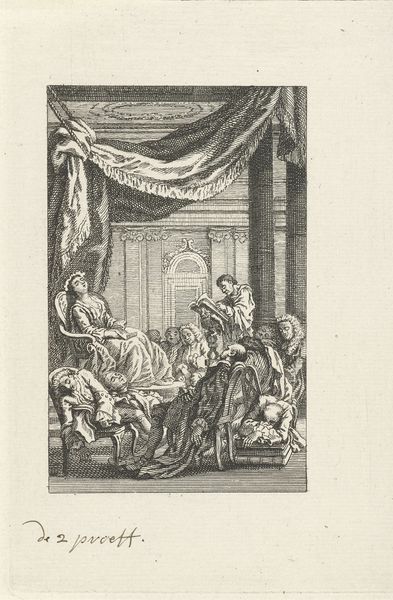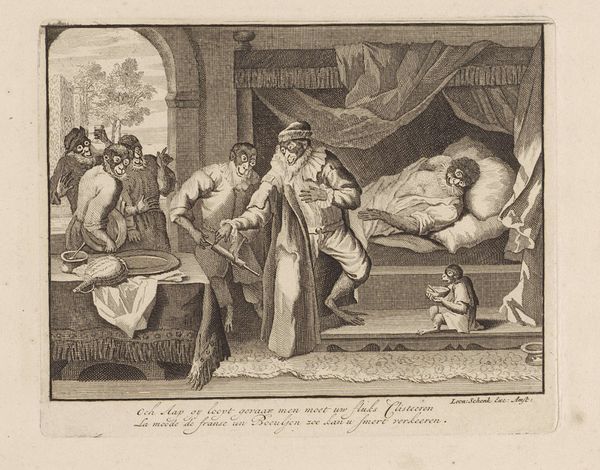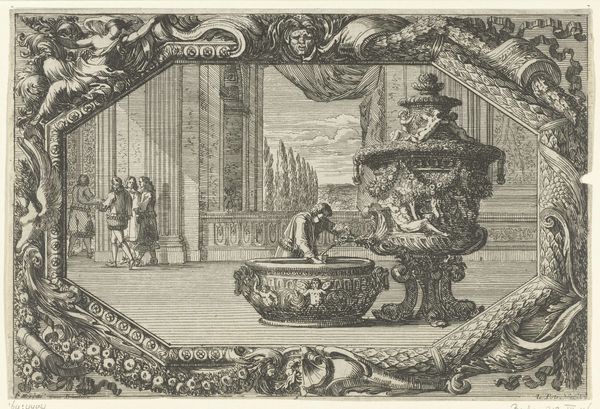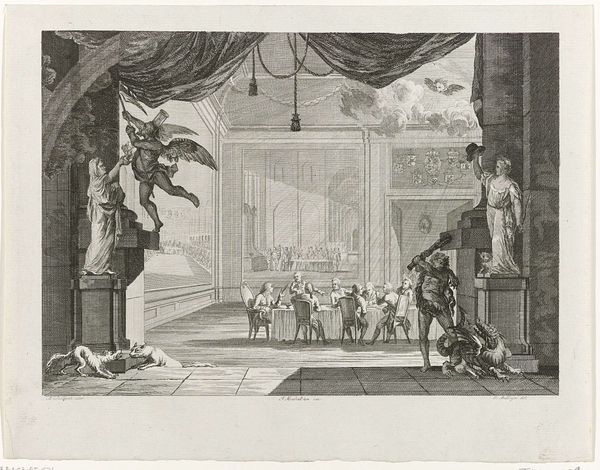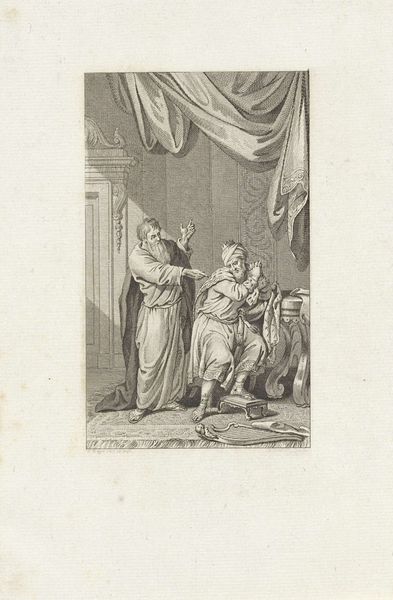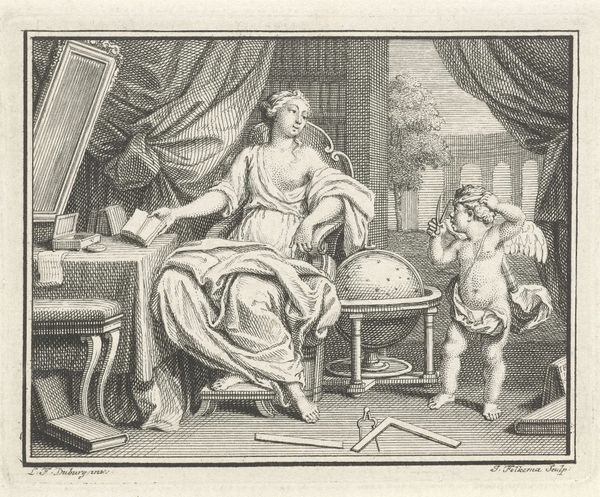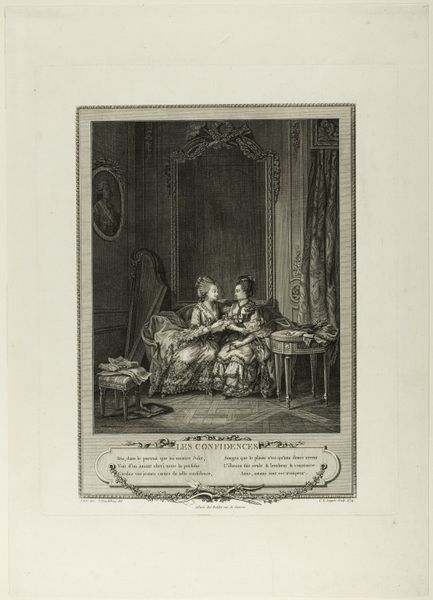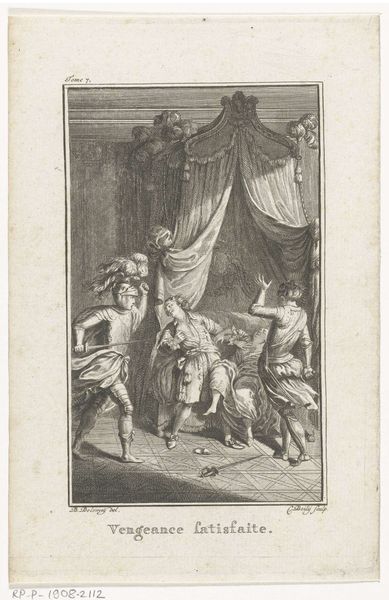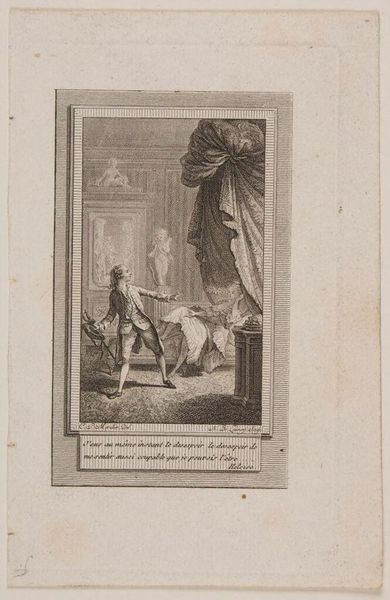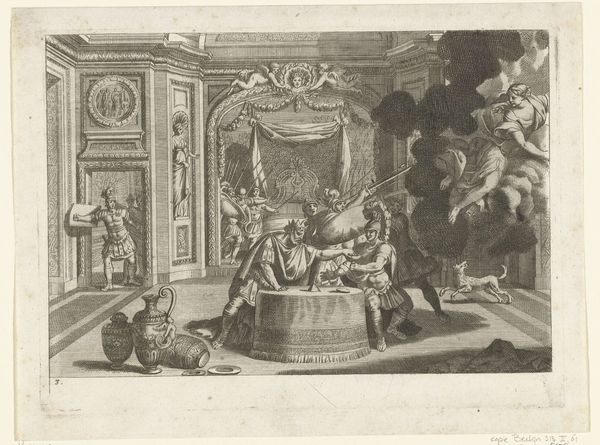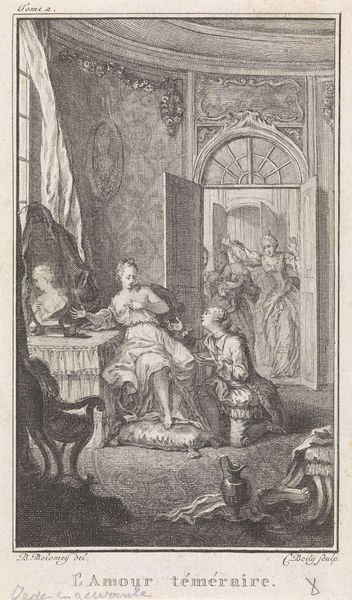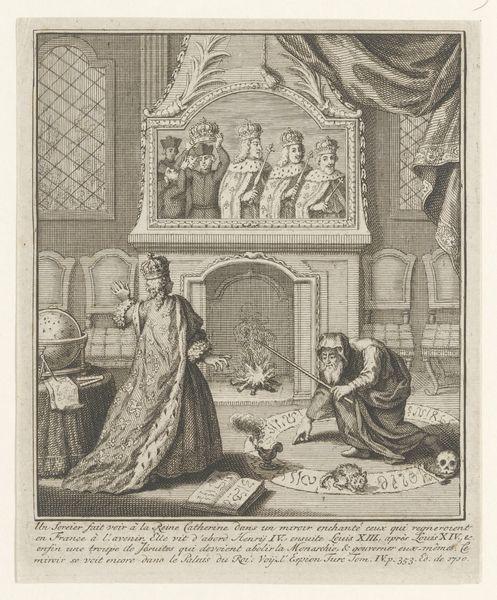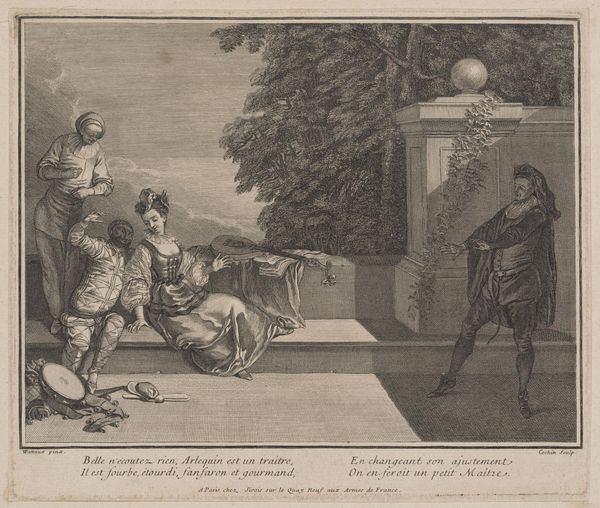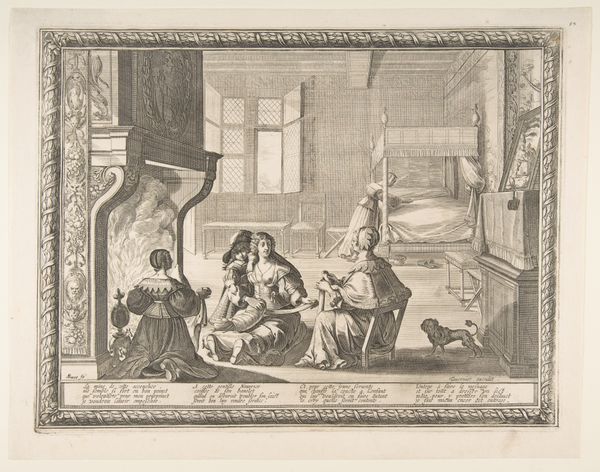
print, engraving
#
allegory
#
baroque
# print
#
figuration
#
line
#
history-painting
#
engraving
Dimensions: height 131 mm, width 195 mm
Copyright: Rijks Museum: Open Domain
Editor: Here we have, from circa 1696 to 1717, an engraving at the Rijksmuseum called "Titelblad: ornamentele panelen," by an anonymous artist. It depicts classical figures within an elaborate border. It's incredibly detailed! What particularly strikes you about this piece? Curator: I'm interested in this print as a product of its time. The sharp lines, the fine detail achieved through engraving – it all speaks to the skilled labor involved in printmaking. These prints weren’t simply artistic expressions, they were commodities. Did these panels circulate widely, what was their price point, and who was able to acquire them? These are the questions that resonate most with me. Editor: So, you're focused on its creation and distribution? How does the Baroque style fit into that? Curator: The Baroque style itself becomes a material consideration. The intricate ornamentation, the dramatic allegories – these are elements carefully designed to appeal to a specific clientele, signalling status and taste. Think of it as conspicuous consumption, visualized through the labour-intensive process of engraving and printing. The 'privil' mentioned on the shield grants the printer exclusive rights, pointing to the legal and economic framework supporting this type of production. Editor: It’s fascinating to think about art as a form of commodity, rather than just an aesthetic creation. Curator: Precisely. By examining the means of production, the materials employed, and the social context in which it was created and circulated, we gain a richer understanding of this artwork's place within the broader economic landscape of the time. This perspective shifts our attention away from purely stylistic interpretations toward more concrete factors that conditioned the artist's process. What has been produced as the product of specific processes? Editor: That gives me a whole new lens through which to view this piece, moving beyond just the classical figures and Baroque swirls! I will definitely rethink the economic influence behind works like this. Curator: Glad I could illuminate a perspective of contextual, materials-based production!
Comments
No comments
Be the first to comment and join the conversation on the ultimate creative platform.
